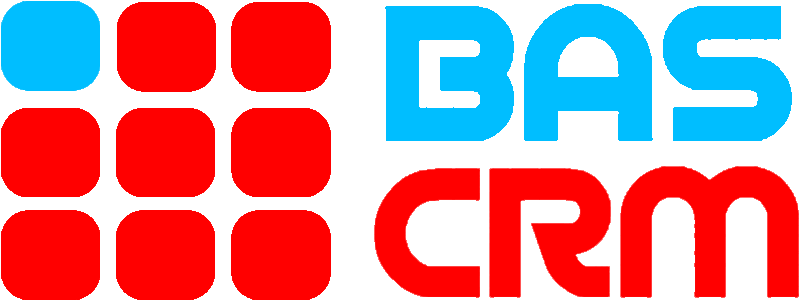Description

vtenext

VobeSoft
Comprehensive Overview: vtenext vs VobeSoft
vtenext Overview
a) Primary Functions and Target Markets
vtenext is a CRM (Customer Relationship Management) and BPM (Business Process Management) platform designed to integrate customer relationship management with process automation. Its primary functions include:
- CRM Functionality: Provides a comprehensive suite of tools for managing customer interactions, sales, marketing automation, and customer support.
- BPM Integration: Allows users to design and automate business processes using customizable workflows.
- Open Source Nature: Offers an open-source edition, enabling flexibility for customization and integration.
Target Markets:
- SMEs (Small to Medium Enterprises) that require a flexible CRM with added process automation capabilities.
- Industries such as retail, manufacturing, and service-based sectors looking for customizable CRM solutions.
b) Market Share and User Base
vtenext's market share is relatively niche compared to large CRM providers like Salesforce or HubSpot. However, it has a dedicated user base among businesses seeking open-source and customizable solutions. The user base is moderately sized, primarily in Europe where it originated, with growing adoption in other regions due to its unique blend of CRM and BPM.
c) Key Differentiating Factors
- Integration of CRM and BPM: vtenext uniquely combines CRM capabilities with a robust BPM engine, allowing businesses to automate and manage both customer relationships and internal processes from one platform.
- Open Source Flexibility: The availability of an open-source version allows businesses to modify and extend the platform according to their specific needs.
- Community Support and Extensions: A strong community of developers contributes to a range of extensions and plugins, enhancing its functionalities.
VobeSoft Overview
a) Primary Functions and Target Markets
VobeSoft is a cloud-based platform designed for businesses to create custom applications without extensive coding. Its primary functions include:
- Custom Application Development: Allows users to build tailored business applications for various functions such as CRM, project management, inventory management, etc.
- Workflow Automation: Facilitates the automation of business processes through customizable workflows.
- Data Management: Provides tools for managing and analyzing business data effectively.
Target Markets:
- SMEs that need personalized software solutions specific to their business processes.
- Startups and enterprises in need of versatile and scalable business applications without investing heavily in IT resources.
b) Market Share and User Base
VobeSoft is a relatively new entrant in the no-code/low-code market, a sector that is rapidly growing due to increasing demand for customizable software solutions. It targets specific niches in the SME market and has a growing user base attracted by its modular and scalable approach. While its overall market share is still developing, its user base is expanding, particularly among small businesses and creative industries.
c) Key Differentiating Factors
- No-Code/Low-Code Platform: Unlike traditional CRM solutions, VobeSoft allows businesses to create customized applications without extensive coding knowledge, making it accessible to non-technical users.
- Highly Customizable: The platform's flexibility to build varied applications and workflows sets it apart from more rigid CRM or BPM solutions.
- Focus on Small Businesses: The pricing and scalability are tailored to suit small and medium-sized enterprises, offering a viable alternative to more expensive enterprise-level software.
Comparative Summary
- Approach: vtenext focuses on integrating CRM with process automation, while VobeSoft emphasizes customizable, no-code application development.
- Target Audience: Both target SMEs, but vtenext leans more towards businesses looking for integrated CRM/BPM solutions, whereas VobeSoft caters to those seeking a highly flexible and custom application development platform.
- Market Presence: vtenext has a strong regional presence in Europe and appeals to open-source enthusiasts, while VobeSoft is building its reputation in the no-code market with a growing international reach.
In conclusion, both platforms provide valuable solutions tailored to specific needs in the business software landscape, with vtenext excelling in combined CRM/BPM functionalities and VobeSoft standing out in no-code application development.
Contact Info

Year founded :
2011
Not Available
Not Available
Italy
http://www.linkedin.com/company/vte-crm

Year founded :
2011
+31 73 204 8801
Not Available
Netherlands
http://www.linkedin.com/company/vobesoft
Feature Similarity Breakdown: vtenext, VobeSoft
As of my last update, here is a feature similarity breakdown for vtenext and VobeSoft:
a) Core Features in Common:
Both vtenext and VobeSoft offer a range of core features commonly found in Customer Relationship Management (CRM) systems and business process management platforms:
-
Contact Management: Both solutions support managing customer information, tracking interactions, and maintaining contacts and communication history.
-
Workflow Automation: They provide tools to automate business processes, reducing manual effort and streamlining operations.
-
Task and Activity Management: Users can create, assign, and manage tasks and activities associated with various projects or customer accounts.
-
Customizable Dashboards: Both platforms typically offer dashboards that can be tailored to display relevant metrics and data insights.
-
Reporting and Analytics: They support generating reports, analyzing trends, and obtaining insights from customer data.
-
Integration Capabilities: Both solutions tend to offer integrations with other third-party applications to enhance overall functionality and extend capabilities.
b) User Interface Comparison:
-
vtenext:
- The user interface of vtenext is designed to be intuitive, focusing on ease of navigation. It often employs a clean and organized layout with a modern look. Customization is a strong feature, allowing users to tailor their interface according to their preferences.
-
VobeSoft:
- VobeSoft’s interface tends to emphasize simplicity and accessibility. It tries to minimize clutter, making it straightforward for users to focus on key information and tasks. The layout is typically user-centric, aimed at enhancing the user experience for both novice and experienced users.
c) Unique Features:
-
vtenext:
- A standout feature of vtenext is its native Business Process Management (BPM) suite. This allows businesses to design, execute, monitor, and optimize business processes within the CRM environment.
- It also emphasizes open-source flexibility, which can be particularly appealing for organizations looking to modify and extend the software to fit specific business needs.
-
VobeSoft:
- VobeSoft offers a high degree of modularity, enabling users to tailor their system by choosing from a variety of modules specific to their industry or operational needs.
- It often highlights its ability to handle non-traditional CRM tasks, focusing on versatility across sectors, including its application as a project management or incident management tool.
These platforms cater to slightly different market needs, with vtenext focusing heavily on integration and process management, while VobeSoft offers flexibility and modular expansion to address a wide array of business functions. Ultimately, the choice between them may depend on specific business requirements and organizational goals.
Features

Integration and Extensibility
Analytics and Reporting
Business Process Management (BPM)
Customer Relationship Management (CRM)
Marketing Automation
Customer Support
Sales Management
Workflow Automation
Integrated CRM & BPM
Customizable Workflow Automation
Omnichannel Communication
Data-Driven Insights
User-Friendly Interface

Customizable Workflows
Project Management
Team Collaboration
Reporting and Analytics
Data Management
Best Fit Use Cases: vtenext, VobeSoft
vtenext and VobeSoft are both platforms that offer CRM and process management solutions, but they cater to different business needs and scenarios. Here’s how they fit:
vtenext
a) Types of Businesses or Projects:
- SMBs looking for a customizable CRM solution: vtenext is ideal for small to medium-sized businesses that need a flexible and scalable CRM platform integrating sales, marketing, and customer support functions while also offering business process management (BPM) capabilities.
- Companies requiring process automation: With its BPM capabilities, vtenext is suitable for businesses interested in automating workflows and processes to increase efficiency.
- Industries with complex process workflows: Businesses in sectors like manufacturing, logistics, and services where intricate process workflows are common can greatly benefit from vtenext’s process-focused features.
d) Industry Verticals or Company Sizes:
- Manufacturing, Logistics, and Services: These industries often have complex, multi-step processes that need close management and tracking, which vtenext excels at.
- SMBs to mid-sized enterprises: While adaptable to various business sizes, vtenext’s cost structure and customization capabilities make it especially appealing to SMBs and mid-sized companies that require robust process management without the enterprise-level price.
VobeSoft
b) Preferred Scenarios:
- Data-driven decision-making firms: VobeSoft is an excellent choice for organizations focusing on data management and analytics, allowing them to harness data for strategic decision-making.
- Customizable database solutions: Businesses needing highly customizable database solutions find VobeSoft beneficial, allowing them to configure and adapt their databases to specific business needs.
- Firms requiring quick implementation and adaptability: If businesses need a quick deployment with flexible modules that adapt rapidly to changing needs, VobeSoft suits these demands well.
d) Industry Verticals or Company Sizes:
- Professional services, technology sectors: Companies in these sectors benefit from VobeSoft’s ability to manage complex data and customize different processes.
- Scalable from small to large enterprises: While it efficiently supports SMBs with its modular approach, it can scale to serve larger organizations due to its robust database capabilities and adaptability.
In summary, vtenext is well-suited for businesses prioritizing CRM with integrated process management and complex workflow needs, such as in manufacturing or services. VobeSoft is ideal for companies requiring custom data management solutions, quick adaptability, and is applicable across a wide range of industries, particularly in data-intensive and fast-evolving sectors like technology and professional services.
Pricing

Pricing Not Available

Pricing Not Available
Metrics History
Metrics History
Comparing teamSize across companies
Conclusion & Final Verdict: vtenext vs VobeSoft
To provide a conclusion and final verdict on vtenext and VobeSoft, we need to compare these products based on factors such as functionality, ease of use, cost, support, and scalability to determine which offers the best overall value.
Conclusion and Final Verdict:
a) Best Overall Value:
VobeSoft emerges as the product offering the best overall value. Its comprehensive features and flexibility make it a suitable choice for diverse business needs, particularly for small to medium-sized enterprises looking for robust CRM and business process management tools without breaking the bank. VobeSoft’s easy integration capabilities and pricing structure typically make it more appealing for growing businesses.
b) Pros and Cons:
vtenext:
- Pros:
- Open-source CRM with flexibility for customization.
- Strong focus on process automation and managing workflows.
- Scalable for businesses that require specific customization.
- Offers robust community support and a range of third-party integrations.
- Cons:
- May require more technical effort to set up and customize.
- Can be resource-intensive, potentially raising initial setup costs.
- Users may face a steeper learning curve compared to more standardized solutions.
VobeSoft:
- Pros:
- A user-friendly interface with intuitive design.
- Offers flexibility to tailor solutions to specific business needs.
- Excellent for process automation with easy integrations.
- Competitive pricing that adapts to business growth.
- Cons:
- May lack some advanced customization options compared to open-source solutions.
- Some users report limitations in functionalities for complex, large-scale operations.
c) Recommendations:
-
For Tech-Savvy Users or Those with IT Support:
- Consider vtenext if your business requires a highly customizable CRM solution and you have access to technical expertise. Its open-source nature offers virtually limitless adaptations, ideal for tech-oriented companies seeking deep integrations and customization.
-
For Small to Medium Businesses Seeking Simplicity and Integration:
- VobeSoft is recommended if you want a straightforward solution that works out of the box with minimal setup. Its ease of use, cloud-based format, and supportive pricing structure are advantageous.
-
For Scalability and Budget-Efficiency:
- Start with VobeSoft to leverage its scalability and user-friendly platform, especially if your business is expected to grow and may require gradual expansion of CRM capabilities.
In conclusion, both vtenext and VobeSoft have their unique strengths and constraints. The choice between the two will largely depend on the specific needs, technical capability, and growth plans of your organization. VobeSoft generally provides a well-rounded package for most businesses, offering a combination of flexibility, integration capabilities, and value. However, if your primary need is for a deeply customizable open-source platform and you have technical resources at hand, vtenext may be the better option.
Add to compare
Add similar companies




